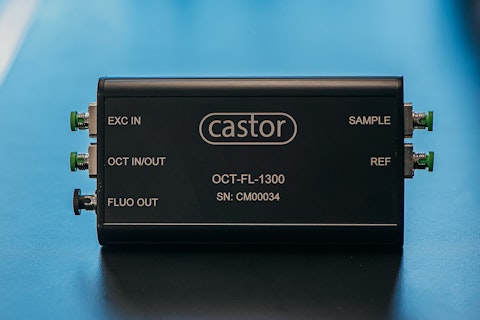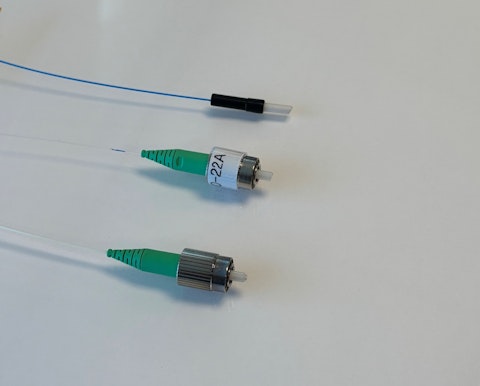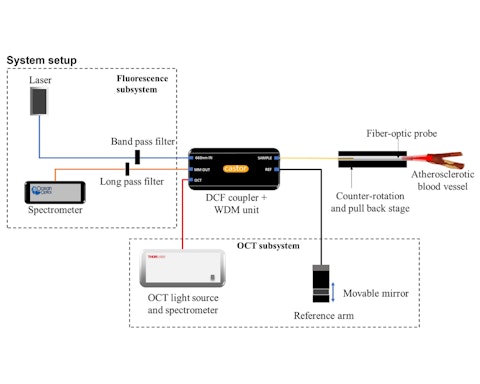
Atherosclerosis—a complex disease
Enhanced contrast
Atherosclerosis causes biomolecular and structural changes that can lead to strokes and heart attacks. Current endoscopic methods only assess one aspect at a time. To gain a comprehensive understanding, Professor Jiawen Li's team (University of Adelaide, Australia) has developed a dual imaging system combining optical coherence tomography (OCT) and fluorescence imaging. This innovative device was designed in collaboration with Castor Optics.
Figure 1: Castor module combining OCT and fluorescence for endoscopic study of blood vessels. Taken from Chen, R. et al., Sci Rep (2024).
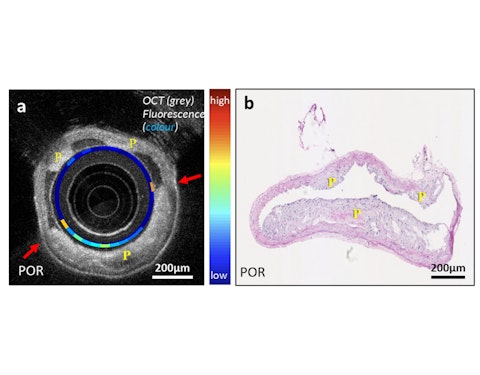
In vivo Imaging
Mice genetically predisposed to atherosclerosis were fed a high-cholesterol diet to promote plaque formation. An optical fiber probe enabled combined OCT/fluorescence imaging of the aorta. Despite a weak signal, the system detected a fluorescent signal emitted by a nanoparticle targeting atherosclerotic plaques, which was absent in control mice. These results confirm that the system developed by Professor Li can detect nanoparticle fluorescence, providing biological data in addition to structural images.
Figure 2: OCT images (gray) are co-aligned with fluorescence images (color) and show that the combination of modalities aids in the identification of atherosclerotic plaques (histology on the right). Taken from Chen, R. et al., Sci Rep (2024).
Revised and improved Double-Clad Fiber Coupler
The module used by Professor Li utilizes the new version of Castor's double-clad fiber coupler DC1300LE2. Improvements allow for a multimode transfer efficiency greater than 85%, and a return loss greater than 55 dB.
Each new design allows our employees to shed even more light on complex problems—it's very rewarding to see the medical advances!” says Lucas Majeau, Director of Operations at Castor.
The module combines a coupler and a Wavelength Division Multiplexer WD1300L, allowing to combine effectively the wavelength ranges of both imaging modalities.
“We really gain efficiency by controlling all stages of manufacturing of the multiple couplers in the module,” reveals Audrey Laurence, Application Scientist at Castor.
The work of Professor Li and her team has been published in Scientific Reports (2024).
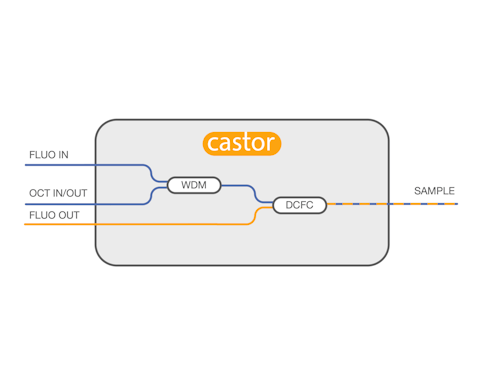
Featured Products
- Double-Clad Fiber Coupler, large inner cladding, 1300/1550 nm (DC13000LE2)
- Small Footprint Module, OCT and fluorescence, 1300nm (OCT-FL-1300)
- Wavelength Division Multiplexer, 1300nm (WD1300L)
Written by Caroline Boudoux, Co-Founder & Co-president

